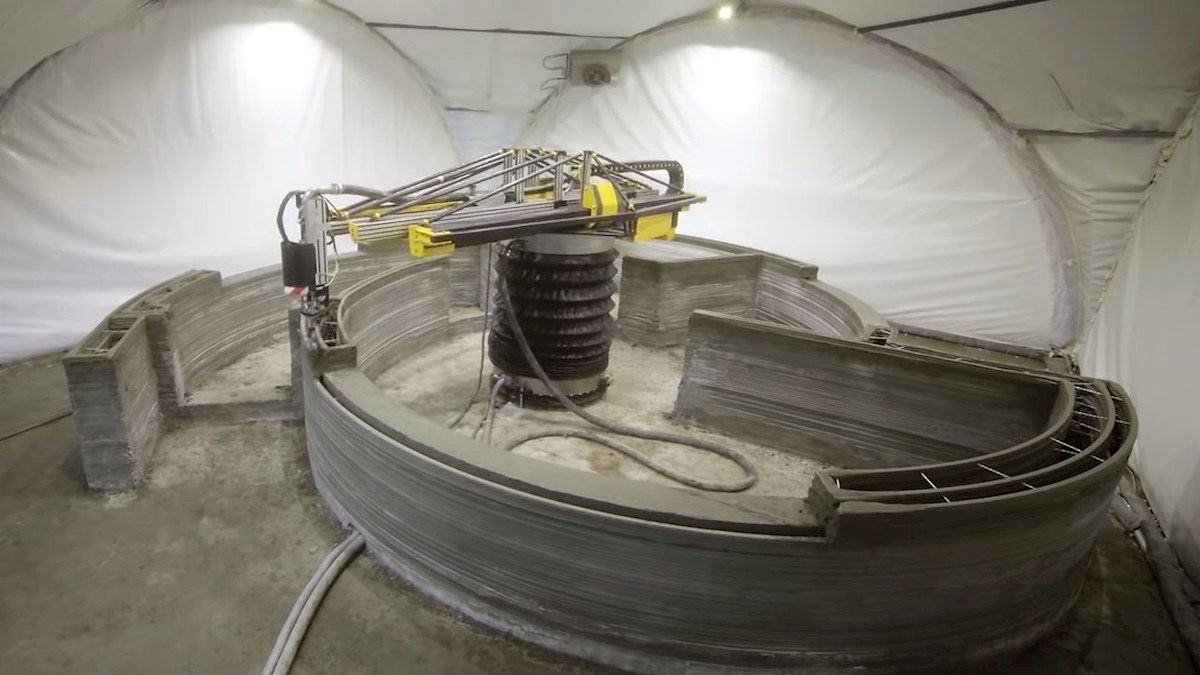3D Printing is often something viewed as having limited applications. Prototype manufacturing is probably the most well-known; 3D models used for car parts, aerospace applications or other items that simply require a high quality, low cost avenue. In recent years however, a version of 3D Printing is being used to build houses all over the world.
To achieve such a large build, engineers are not using a small printer that produces thousands of pieces. Using incredibly simple materials, like concrete, a crane-like machine pours the medium into a system that deposits material layer by layer, just like a small FDM printer. Typically, the concrete material used is fast drying so the walls hold their shape while being layered upon. Houses can now be constructed for less than $4,000 and in less than 24 hours! According to Business Insider, a typical house is around 350 square feet. Which really is not that large. Probably more like an apartment. However, they were only running the printer at 25% speed. Engineers believe they can create a 600-800 square foot house for the same price.
In 2016 the largest 3D printed building was constructed. The whole building was created by 3 workers and a printer. The walls are 31 feet tall and the structure is 6900 square feet. I could not find what the building cost to construct; however, going off the $4,000 per 350 square feet we can estimate this would be around $78,000 to build. If we go off of their full estimate with their printer at full speed, it would only cost $34,500! The printed building was created for commercial use. In the United States, the average cost to build an office building is around $196.49 per square foot. Equated, this structure would cost over one million dollars! This could be a promising look at the future of architecture.
Some people doubt the practicality of this technology. A writer from architizer.com is not convinced that one machine can replace the complicated process of creating a livable structure. The writer also says that there have not been any other structures that can be livable. Obviously, this person has not done their research. He/she says, “No one has been able to successfully take the leap from printing fancy art pavilion to printing a functioning building”. No research done there.
In the future this may be the only way we build houses. This technology will only improve and get more efficient. So, the low prices it already asks for, they will only get lower. However, I think it will take the industry a while to completely switch over to this technology. As there are still some small kinks to work out.





